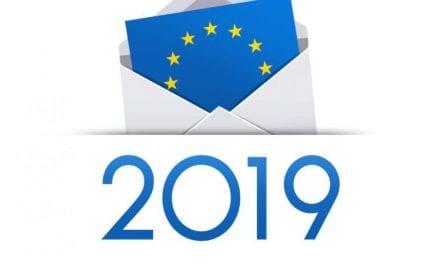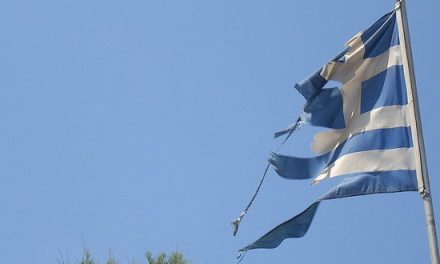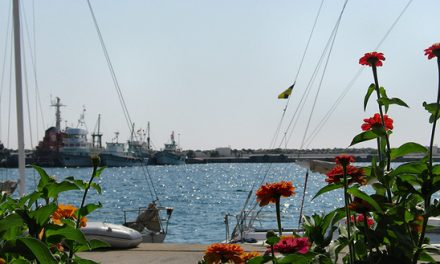By James Dawson, City Metric
Macedonian fans at the Handball World Cup, contested in Germany earlier this year, were easily idenitifiable, from the Alexander the Great helmets they wore to support their team, who played as Macedonia – despite the dispute with Greece over their country’s name coming to its conclusion with the new name of North Macedonia.
These helmets, of course, get to the heart of this dispute, with the Greeks seeing the ancient conqueror as a Hellenic figure and important part of Greek culture. Indeed it was Alexander the Great, the infamous ruler of ancient Macedon, who inaugurated the Hellenistic period of ancient Mediterranean history in the third to first centuries BC. It’s objections like this from Greece that have led to 28 years of the official name for its northern neighbour being The Former Yugoslav Republic of Macedonia, or FYRO-Macedonia for short.
The new North Macedonia is only part of the modern region of Macedonia (and indeed of the ancient kingdom, which existed from about the 600sBC to the Roman conquest in 167BC). Northern Greece around the city of Salonica and the south-western part of Bulgaria also form part of the region, with those living in those areas also self-identifying as Macedonians.
Disentangling who has best claim to the name is fraught. The ancient Macedonians spoke a Hellenic language, conquered Greece and spread Hellenic culture across the Mediterranean. The modern Macedonian language is South Slavic, a language group that was only introduced to the Balkan in the fourth or fifth centuries AD. However, language is not the same as genetics; indigenous peoples adopt new languages over time. English, for example, only came to Britain around the same time and many modern English people are descended from ancient Britons as well as Anglo-Saxons. Indeed it was the Byzantine monks Cyril and Methodius who first codified the South Slavic languages in the 800sAD, what today is known as Old Church Slavonic.
The dispute is cultural, though it has led to political implications, up until now blocking North Macedonia from NATO or EU membership. The name was seen as laying claim to the heritage and perhaps territorially to the whole region. Neighbouring places – the country and the Greek regions – having the same name was also seen as confusing, although doing so would not be unique: two countries are called Congo and four have Guinea as part of their name. Within Europe, the Belgian province of Luxembourg neighbours the country of Luxembourg (the capital of which is also called Luxembourg). Moldova is the eastern part of Moldavia, the western part being in Romania and the northern and southern parts in Ukraine. Further apart, Georgia is a country in the Caucasus and a US state.
To resolve the issue, the UN suggested various names, each of which added a distinguishing adjective: New Macedonia, Upper Macedonia, Vardar Macedonia, Macedonia-Skopje and North Macedonia.
New Macedonia could have referred to the fact that the country only recently gained independence, in 1991. And it would sit alongside New Zealand, which was named after the Dutch province of Zeeland (Zealand is also the largest Danish island, including its capital Copenhagen). But it would negate the long history of the region.
Upper Macedonia would be a geographical expression, since the country is generally at a higher altitude. Bolivia was known as Upper Peru before its independence from Spain, and in West Africa, the enigmatically named Upper Volta was renamed the even more enigmatic Burkina Faso in 1984. The issue in this case, however, is that the Bulgarian part of Macedonia is also at high ground, being made up largely of the Pirin mountains.
The Vardar is the major river of the country, flowing through its capital Skopje. Many countries and territories have been named after rivers – Gambia in West Africa is a long thin country following the eponymous river for its lower 350 miles to the sea and never more than 30-miles wide. Belize, Congo, Jordan, Moldova, Niger, Nigeria, Paraguay and Uruguay are all named after rivers. So are many US states and other regions and provinces around the world. India, one of the world’s largest countries, is named after the River Indus, which is now almost wholly within Pakistan. This is one of the problems with naming territories after watercourses – rivers flow downhill going through other places. The Vardar flows into the Aegean through Greek Macedonia, just to the west of Salonica.
Using the capital to denote a country is seen with Guinea-Bissau, where the neighbouring Republic of Guinea is also sometimes unofficially called Guinea-Conakry. Other unofficial uses are Congo-Brazzaville and Congo-Kinshasa, the latter being the Democratic Republic of Congo or DR Congo. And Mexico is named after its capital. Throughout the Macedonian naming dispute, Greece often referred to the Republic of Skopje, which is perhaps one reason (as well as alienating other towns and cities in the country) why this solution would not have worked.
This has left North, a compass point that is hard to dispute (although it isn’t always wholly accurate: the northernmost point of the island of Ireland is not in Northern Ireland). The use of North, South, East and West in country names may seem common but actually isn’t. Both Koreas and previously Germany, Vietnam and Yemen, all have or had different official names. North Cyprus is not an officially recognised country. Western Sahara is a disputed territory and the Pacific island country of Samoa dropped Western (which distinguished it from American Samoa) in 1997. Compass points denote many counties, provinces or federal states within countries, but as far as sovereign nations go, North Macedonia will only be in the company of East Timor, South Africa and South Sudan. Though, lest you forget this saga, to its south are the Greek regions of Central Macedonia, Eastern Macedonia and Western Macedonia.



















